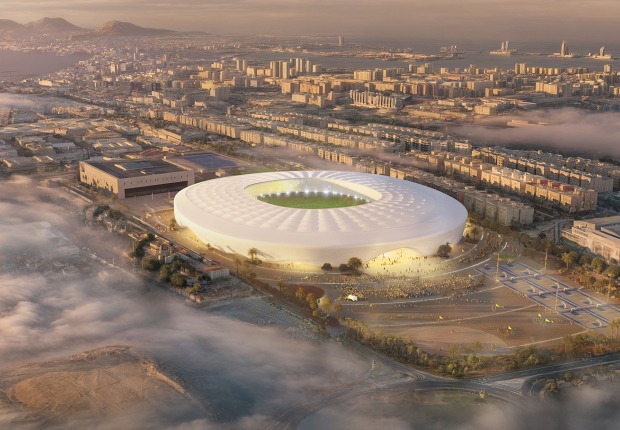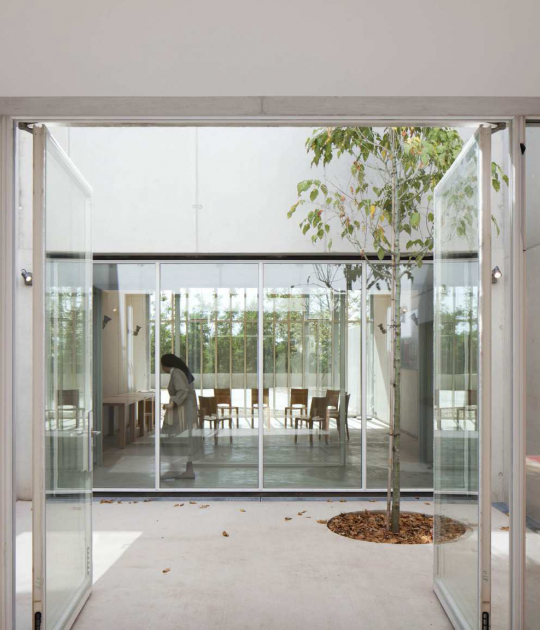Located in the Meatpacking District of Manhattan, between the High Line and the Hudson River, Renzo Piano Building Workshop has designed an asymmetrical building, responding to the industrial character of the neighborhood. The upper floors offer open views towards the river on the west facade and the building steps back eastward from the elevated park.
With almost 5000m² of exhibition space, the new building will house the extensive work of this institution, which was running out of space to display their entire collection.
The former headquarters will house since spring 2016 exhibitions programmed by the Metropolitan Museum of Art (MET), thanks to an agreement that will last eight years with possibility of extension for a longer period of time.
Description of the project by Renzo Piano Building Workshop
The Whitney Museum is building itself a new home in downtown Manhattan's Meatpacking District. Due to open on May 1st, 2015, the project will substantially enlarge the Whitney's exhibition and programming space, enabling the first comprehensive view of the Museum's growing collection, which today comprises more than 19,000 works of modern and contemporary American art.
Founded in 1930, the Whitney , in 1966. At the time, its collection numbered some 2,000 pieces of 20th-century American art, so its nearly 100-fold expansion needs space to flourish. The new museum is to be situated in New York's vibrant Meatpacking District. Fronting onto Gansevoort Street, the site lies between the Hudson and the High Line, Manhattan's recently completed elevated urban park, built on a disused elevated spur of the 1930s New York Central Railroad.
Clad in pale blue-grey enamel steel panels, the new, eight-story building is powerfully asymmetrical, with the bulk of the full-height museum to the west, Hudson-side, with tiers of lighter terraces and glazed walkways stepping down to the High Line, embracing it into the project.
The Museum is entered via a dramatically cantilevered plaza, or 'largo', a public space that serves as a kind of decompression chamber between street and museum, a shared space, with views to the Hudson and the High Line entrance just a few steps away. Accessed from the 'largo', the main entrance lobby also serves as a public gallery - nearly a thousand square feet (100 sq. m) of free-entry exhibition space.
Level three houses a 170-retractible seat theatre with double-height views over the Hudson River, along with technical spaces and offices.
Some 50,000 sq.ft (4 650 sq.m) of gallery space is distributed over levels five, six, seven and eight, the fifth level boasting a 18,000 sq. ft (1670 sq.m), column-free gallery - making it the largest open-plan museum gallery in New York City. This gallery is reserved for temporary exhibitions and its expansive volume will enable the display of really large works of contemporary art. The permanent collection is exhibited on two floors, level six and seven. These two floors also step back towards the west to create 13,000 sq. ft (1 200 sq. m) of outdoor sculpture terraces.
Museum offices, education centre, conservation laboratories and library reading room are situated north of the building's core on levels three to seven, including a multi-use theatre for film, video and performance on level five.
Finally, on the top floor is the 'studio' gallery and a cafè, naturally lit by a skylight system in saw-tooth configuration.
CREDITS. DATA SHEET.-
Architects.- Renzo Piano Building Workshop
Executive Architect.- Cooper, Robertson & Partners
MEP Engineer.- Jaros, Baum & Bolles
Lighting/Daylighting Engineer.- Ove Arup & Partners
Structural Engineer.- Robert Silman Associates
Construction Manager.- Turner Construction, LLC
Landscape Architect.- Mathews Nielsen
Owner's Rep.- Gardiner & Theobald, Inc.
Client.- The Whitney Museum of American Art
Dates.-2007-2015





























































